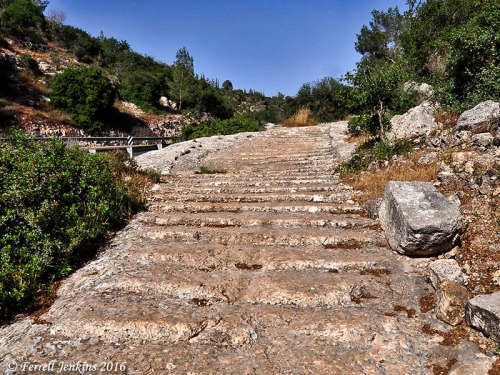And when she came to the mountain to the man of God, she caught hold of his feet. And Gehazi came to push her away. But the man of God said, "Leave her alone, for she is in bitter distress, and the LORD has hidden it from me and has not told me."
2 Kings 4:27
Take some time to read this story, it is a telling one. It may seem a little confusing, and it involves Elisha, Gehazi, and a Shunammite woman. I don't know all the ins and outs of the customs of the day, but there are some practical things that are stated in this chapter that we can all learn from
- Vs.27 (quoted above) Elisha tells Gehazi to leave the woman alone because as the KJV puts it, she is "vexed" in her soul. The ESV quoted above, defines this as in "bitter distress." We could focus on Elisha's statement, that God had hidden this from him, but if we do, we will miss the point. Whatever is happening to the woman, it is upsetting to her to the point that she is "stressing out" about it.
- What we might miss, is that in vs.26 when she is directly asked about her state, she maintains “all is well.” Now, how do we reconcile this with what Vs.27 reveals? Is she adapting the typical human response when asked how we are and we dont' want people to know - we tell them, "I'm ok?" Is she lying? or, has she adapted a frame of mind that even though there are things in life that are stressful and cause us to be troubled, we are "alive and well, therefore it is a good day?"
On Nov.2, 1873, a ship called Villa de Havre (1) collided with another ship and sank within
twelve minutes. Three hundred and thirteen passengers were on board, among which were Rufus Wheeler Peckham a congressman and judge from New York. Hamilton Murray and his sister, for whom the Hamilton Murray Theater at Princeton is named. Lesser known, was the wife of a man, Horatio Spafford, Anna and their four daughters. Anna survived the wreck, but the four daughters did not. Anna was found unconscious, floating on a plank. Picked up by the crew of the Loch Earn, she was carried to Cardiff, Wales in the UK where she then sent telegram to her husband who could not join them on the trip, "Saved alone....what shall I do..." Horatio Spafford who was in Chicago, left immediately to join to his wife in Cardiff. On the Atlantic, the Captain of the ship called Spafford to the bridge, where he told him that they were passing over the place where his daughters had drowned. He wrote to Anna's half-sister, "On Thursday we passed over the spot where she went down, in mid-ocean, three miles deep. But, I do not think of our dear ones there. They are safe, folded, the dear lambs." It would be later, that Spafford would write what would become a well known hymn, "It Is Well With My Soul." Phillip Bliss originally composed the music to the song, that was originally called, "Ville de Havre." But the cry of the song was so great, that it became known by the title which it now bears.
 |
| Ville de Havre |
"Though Satan should buffet, though trials should come, Let this blest assurance control, That Christ hath regarded my helpless estate, And hath shed His own blood for my soul!"
So, no matter what they cry, what the sorrow, plague, hurt, torment, stress of life, know this. It could be worse. If nothing else today, know that God has looked upon your helpless estate and given you a pearl of great price. You can languish in your circumstance, or you can understand, that even if you die today, if you are in Christ you have everything. What is worse? Not the circumstance you find yourself in, but to for you to allow that circumstance to keep you from seeing the one most valuable thing in front of you. The estate of your soul now and in eternity.
Jim
__________________________________
FOOTNOTES
1. https://en.wikipedia.org/wiki/SS_Ville_du_Havre




